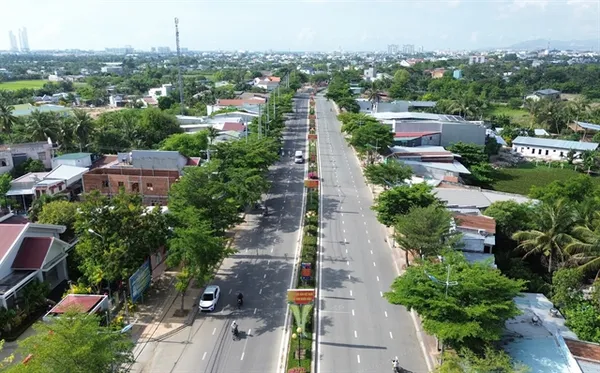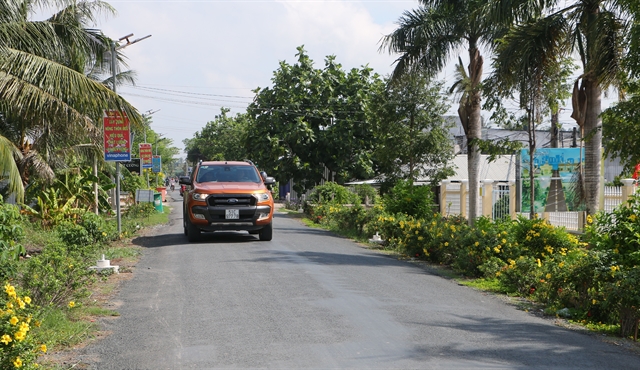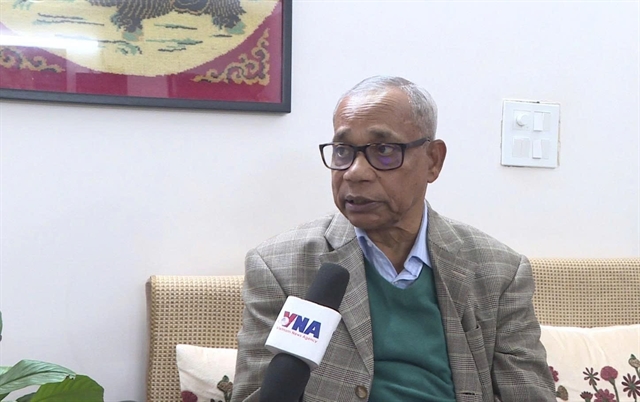 Society
Society

 |
| A rural road in Cù Lao Dung District in Sóc Trăng Province is paved and planted with flowers. — VNA/VNS Photo Tuấn Phi |
SÓC TRĂNG — The building of new-style rural areas in Sóc Trăng Province’s Cù Lao Dung District has improved the lives of people and the appearance of rural areas.
Located in the Hậu River, a tributary of the Mekong River, the riverine island district now has all its seven communes recognised as new-style under the country’s programme of building new-style rural areas.
To achieve the recognition, a commune must meet the programme’s 19 criteria related to infrastructure, irrigation, electricity, environment, income, education, healthcare, social security, culture and others.
In 2002, the district was established by separating from Long Phú District and people faced many difficulties because of the lack of roads, power supply, schools and other infrastructure facilities as it is a riverine island isolated from the mainland.
It has a total area of 24,503ha and 16,903 households.
Trần Thanh Nguyên, chairman of the district People’s Committee, said the programme has spread and received high consensus from residents.
The district’s socio-economic development is good, and the appearance of rural areas has improved, he said.
The district has built and expanded 226 roads of a total of 266,600km.
Up to 99.1 per cent of households have access to power grids.
It has only 53 poor households, accounting for 0.35 per cent.
The average income per capita is VNĐ62.4 million (US$2,400) a year, up 3.5 times from 2010, when the district started the programme.
The district has strengthened its protection of the environment through various activities such as clearing bushes, cleaning sewage areas, collecting rubbish and planting trees.
In March, it started a 30-day plan of beautifying the appearance of the landscape and cleaning the environment.
The plan also strengthened advocacy activities to enhance public awareness about keeping environmental sanitation and a civilised lifestyle.
The district targets having four of its seven communes recognised as advanced new-style rural communes next year, which achieve higher standards across all 19 criteria than new-style rural areas.
An Thạnh Tây was recognised as an advanced new-style rural commune last year.
Phạm Trường Giang, chairman of the commune People’s Committee, said the commune's soil and weather conditions are suited for agriculture production. The commune has implemented many farming methods in which there are linkages among stakeholders to secure sales for farmers.
They include growing sweet potato, longan and green skin-pink flesh grapefruit, which offer high incomes for farmers and help to reduce poverty, he said.
Lê Văn Út Em, a resident in An Thạnh Tây, said the lives of people have been enhanced and roads, power supply, schools and other infrastructure facilities have been invested in sufficiently.
“The income of people in the commune has increased by two to three times since the first years of implementing the programme. Security and social order are secured, and this helps people feel secure to do production and become wealthy,” he said.
The district aims to have two exemplary new-style communes next year and to receive this recognition, they must achieve higher standards across all 19 criteria than advanced new-style areas.
An Thạnh 1 was recognised early this year as an exemplary new-style commune, becoming the first of its kind in the province.
It has 2,106 households and 2,980ha, including 1,320ha of fruits.
Lê Hoài Thanh, chairman of the An Thạnh 1 People’s Committee, said the commune has co-operated with relevant agencies to transfer science and technology to farmers and encouraged them to turn unproductive orchards into growing high-value trees.
It has developed 68 fruit growing models in which the farming of Cát Chu mango, Xuồng longan and guava offers high profits, he said.
The commune’s average income per capita is more than VNĐ75.5 million ($2,900) and the poverty rate was 0.35 per cent last year, he said. — VNS




